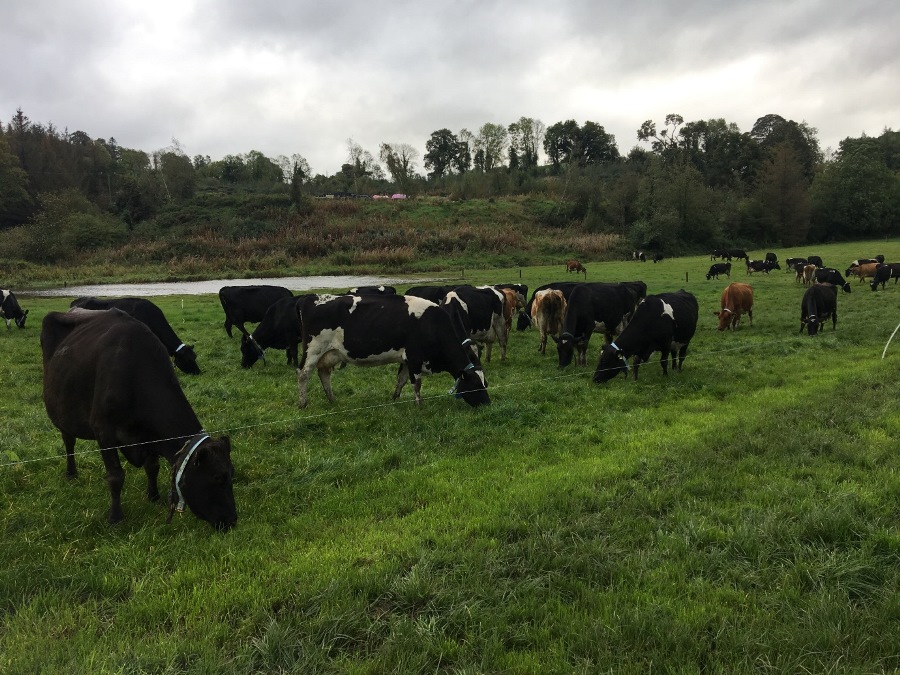When To Apply Early Nitrogen
Lack of nitrogen (N) supply in the soil can limit spring grass growth. The timing and rate of fertiliser N and slurry application are key decisions for every livestock farmer. Research has shown a large range in grass response to early N (between 5 to 18 kg DM/kg N applied). While the appropriate application of early N is beneficial, the incorrect application of early N is wasteful, costly, pollutes water and increases greenhouse gas emissions.
- Always check the weather forecast (www.met.ie) prior to making slurry or fertiliser N applications – do not spread slurry or fertiliser if rain or very cold weather is forecast.
- Only apply fertiliser N when soil temperature is greater than 5°C and rising.
- Check the soil trafficability before spreading to avoid damage to soil.
- Measure farm cover and use the grass growth predictions (Grass10 Newsletter, PastureBase Ireland, Farming Forecast on Sunday on RTÉ 1) to inform decision making around slurry and N fertiliser application.
- Target the areas of the farm most likely to respond to early application of N, these include fields with a high perennial ryegrass content or those recently reseeded, drier areas of the farm, fields with a grass cover of greater than 400 kg DM/ha or 6 cm grass, and fields with optimum soil fertility, i.e. good P and K status, pH > 6.2.
Apply slurry to approx. 40% of the farm as soon as permitted (depending on slurry opening date), targeting high demand areas where possible, e.g. silage ground and low P and K grazing ground.
In February, slurry can be applied to grazed areas (up to 30% of the farm). Apply all slurry using LESS (low emissions slurry spreading) methods. 2,000 gals/ac applied using LESS will supply ~20 kg/ha (16 units/ac) of available N and 2,500 gals/ac will supply ~25 kg/ha (20 units/ac) of available N. Manage slurry application to ensure that no more than 2,500 gal/ac are applied in each application.
In February, fertiliser N should be applied to the areas of the farm that received no slurry in January. Don’t apply more than 29 kg N/ha (23 units N/ac) chemical N fertiliser in February. The whole farm should receive fertiliser N in March (29-50 kg N/ha; 23-40 units N/ac). No more than 75 kg N/ha (Slurry N + Chemical N) in total up to early April (Table 1).
Table 1. Nitrogen fertiliser and slurry application plan for the early spring period on well-drained soil
 1Application of N for February/March grazing
1Application of N for February/March grazing
2Assumes slurry at 6% DM, adjust application rates based on slurry DM%
3Some of this area will be silage ground
4Combination of Protected Urea and cattle slurry
Table 2. Nitrogen fertiliser and slurry application plan for the early spring period on heavy soil, less intensive and/or later turnout farms (flexibility in application is essential on heavy land)
 1Assumes slurry at 6% DM, adjust application rates based on slurry DM%
1Assumes slurry at 6% DM, adjust application rates based on slurry DM%
2Some of this area will be silage ground
3Combination of Protected Urea and cattle slurry
Table 3. Closed Periods for the application of organic & chemical fertilisers
|
Zone
|
Chemical Fertilisers
|
Organic Fertilisers
|
Farm Yard Manure
|
|
A
|
15 Sept – 12 Jan
|
15 Oct – 12 Jan
|
1 Nov – 12 Jan
|
|
B
|
15 Sept – 15 Jan
|
15 Oct – 15 Jan
|
1 Nov – 15 Jan
|
|
C
|
15 Sept – 31 Jan
|
15 Oct – 31 Jan
|
1 Nov – 31 Jan
|

 1Application of N for February/March grazing
1Application of N for February/March grazing 1Assumes slurry at 6% DM, adjust application rates based on slurry DM%
1Assumes slurry at 6% DM, adjust application rates based on slurry DM%